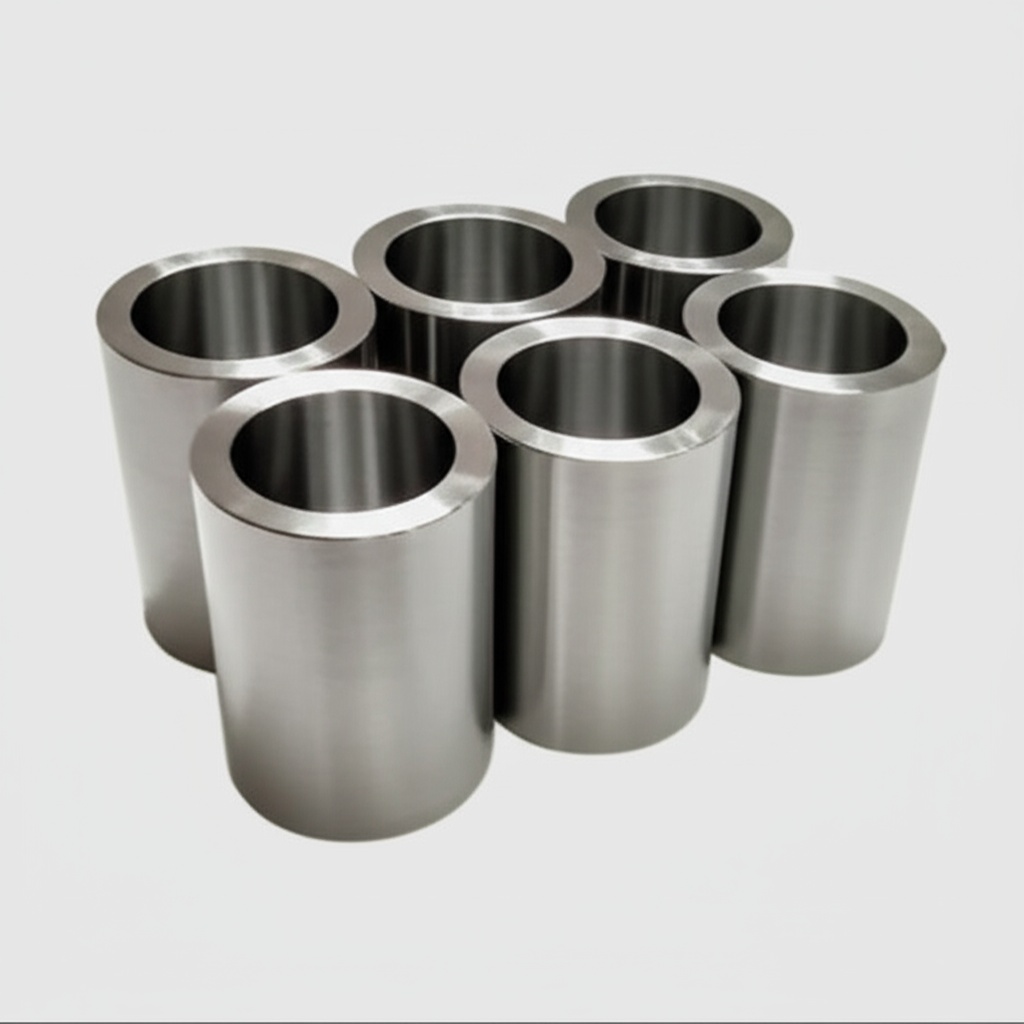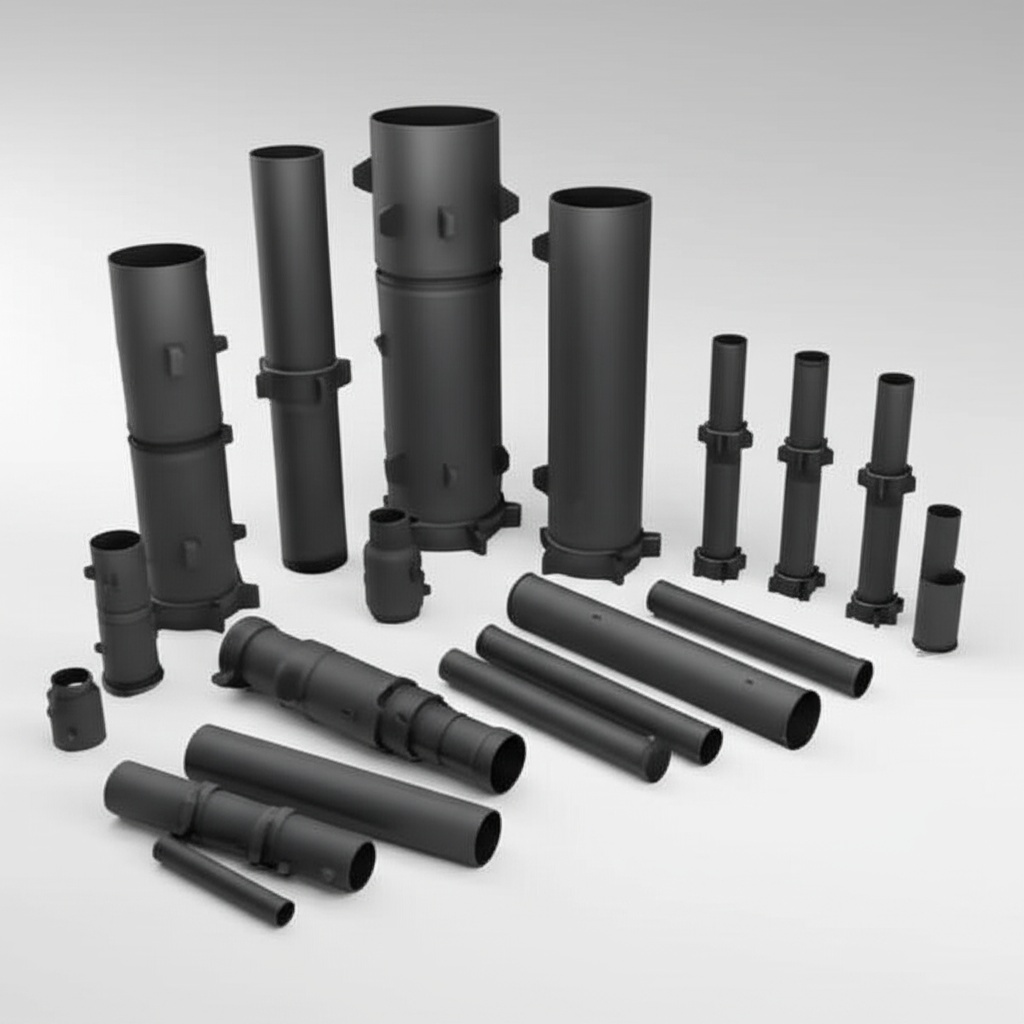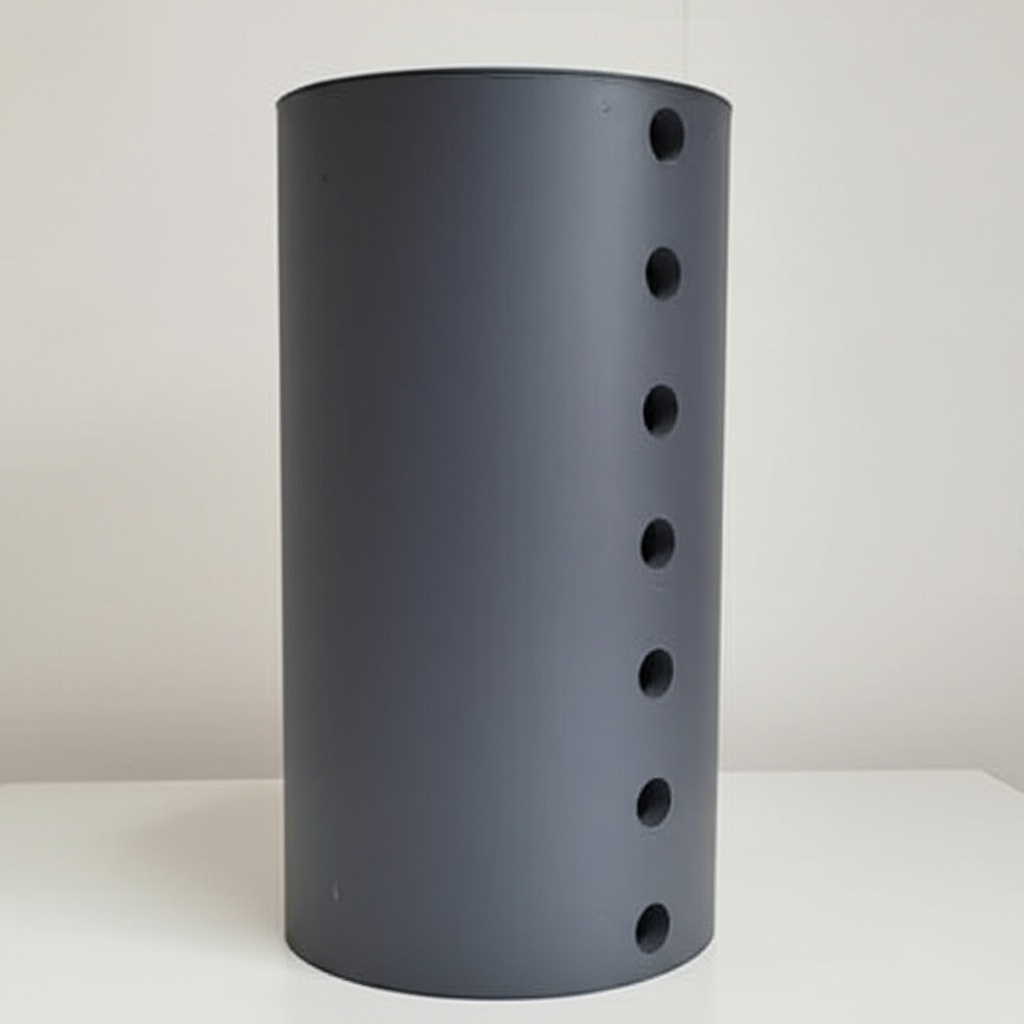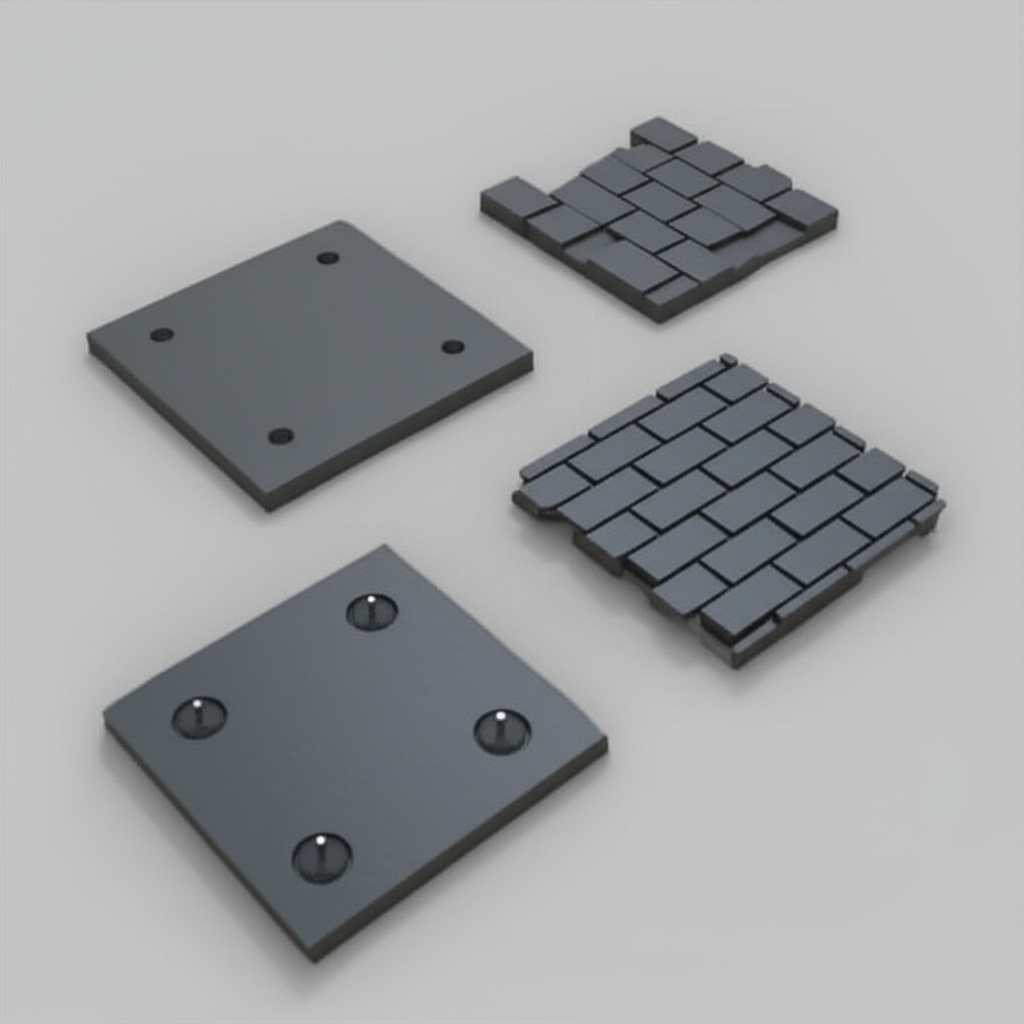Russian SiC Manufacturers for Your Supply Needs

Share
Russian SiC Manufacturers for Your Supply Needs
In today’s rapidly evolving industrial landscape, the demand for high-performance materials capable of withstanding extreme conditions is paramount. Among these, silicon carbide (SiC) stands out as a material of choice for its exceptional properties. For engineers, procurement managers, and technical buyers across diverse sectors such as semiconductors, automotive, aerospace, and renewable energy, sourcing reliable and high-quality custom silicon carbide products is crucial. This blog post delves into the world of SiC, with a focus on supply needs, and introduces a key player in the global SiC manufacturing arena.
What are Custom Silicon Carbide Products and Why are They Essential?
Custom silicon carbide products are engineered ceramic components tailored to specific industrial applications. Unlike standard materials, custom SiC parts are designed to meet unique performance criteria, including intricate geometries, precise tolerances, and specialized surface finishes. This customization is critical because SiC offers an unparalleled combination of properties:
- Extreme Hardness and Wear Resistance: SiC is one of the hardest materials known, making it ideal for applications requiring exceptional abrasion and erosion resistance.
- High Thermal Conductivity: Its ability to efficiently dissipate heat is vital for thermal management in power electronics and high-temperature processing.
- Excellent Chemical Inertness: SiC resists corrosion from most acids, bases, and aggressive chemicals, extending the lifespan of components in harsh environments.
- High Temperature Strength: SiC retains its mechanical strength at elevated temperatures where most metals would deform or melt.
- Low Thermal Expansion: Its minimal expansion with temperature changes ensures dimensional stability, crucial for precision applications.
These properties make custom SiC products essential in applications where conventional materials fail to perform, driving efficiency, reliability, and longevity.
Main Applications of Silicon Carbide Across Industries
The versatility of silicon carbide allows it to be employed across a vast array of high-tech industries. Here’s a glimpse into its diverse applications:
- Semiconductor Manufacturing: SiC wafers and components are critical for high-power, high-frequency, and high-temperature semiconductor devices, including power MOSFETs, diodes, and rectifiers, enabling faster and more efficient electronics.
- Automotive Industry: Used in electric vehicle (EV) inverters, on-board chargers, and powertrain components, SiC enhances efficiency, reduces weight, and extends range.
- Aerospace and Defense: SiC’s lightweight and high-temperature capabilities make it suitable for aerospace components like engine parts, missile radomes, and brake discs.
- Power Electronics: From industrial motor drives to uninterruptible power supplies (UPS), SiC significantly improves the performance and reliability of power conversion systems.
- Renewable Energy: In solar inverters and wind turbine converters, SiC boosts efficiency and reduces energy losses.
- Metallurgy and High-Temperature Furnaces: SiC is used for furnace components, kiln furniture, and crucibles due to its thermal shock resistance and high-temperature stability.
- Chemical Processing: Its corrosion resistance makes it ideal for pump components, valves, and heat exchangers in aggressive chemical environments.
- LED Manufacturing: SiC substrates are used for growing GaN layers, enabling high-brightness LEDs.
- Industrial Machinery: Wear parts such as seals, bearings, and nozzles benefit from SiC’s exceptional hardness and wear resistance.
- Telecommunications: SiC is being explored for high-frequency communication devices due to its electronic properties.
- Oil and Gas: Components for downhole tools and harsh environment sensors leverage SiC’s durability.
- Medical Devices: Precision instruments and components requiring biocompatibility and durability.
- Rail Transportation: Power converters and braking systems benefit from SiC’s efficiency and robustness.
- Nuclear Energy: SiC composites are being researched for next-generation nuclear reactor components due to their radiation resistance.
Why Choose Custom Silicon Carbide?
Opting for custom silicon carbide over off-the-shelf solutions provides significant advantages:
- Optimized Performance: Components can be precisely engineered to meet the exact thermal, mechanical, and chemical demands of an application, maximizing efficiency and longevity.
- Enhanced Durability: Custom designs can incorporate features that mitigate stress points, improve wear resistance, and enhance overall structural integrity, leading to extended operational life.
- Cost-Effectiveness in the Long Run: While initial custom tooling costs may exist, the improved performance, reduced downtime, and extended service life often result in a lower total cost of ownership.
- Problem-Solving Capabilities: Custom SiC solutions can address unique engineering challenges that standard materials or components cannot, leading to innovative solutions for complex problems.
- Tailored Geometry and Fit: Ideal for complex assemblies or retrofitting existing systems where standard shapes and sizes are inadequate.
Recommended SiC Grades and Compositions
Silicon carbide is not a monolithic material; it comes in various grades and compositions, each with distinct properties tailored for specific applications. Understanding these differences is key for technical buyers and engineers. Here are some common types of technical ceramics:
| SiC Grade/Type | Key Characteristics | Typical Applications |
|---|---|---|
| Reaction-Bonded SiC (RBSC) | High strength, excellent wear resistance, good thermal conductivity, low porosity, good creep resistance. | Kiln furniture, wear plates, nozzles, mechanical seals, pump components, heat exchangers. |
| Sintered SiC (SSiC) | Very high purity, superior hardness, excellent corrosion resistance, high strength at elevated temperatures, fine grain structure. | Mechanical seals, bearings, pump impellers, semiconductor processing equipment, armor. |
| Nitride-Bonded SiC (NBSC) | Good thermal shock resistance, moderate strength, good oxidation resistance, lower cost than RBSC or SSiC. | Refractory linings, crucibles, structural components in furnaces. |
| Chemically Vapor Deposited (CVD) SiC | Extremely high purity, near theoretical density, isotropic properties, excellent surface finish. | Semiconductor susceptors, optical components, mirror substrates, high-precision fixtures. |
| Liquid Phase Sintered SiC (LPSiC) | Improved fracture toughness, high density, good mechanical properties. | Complex shapes, components requiring improved toughness. |
Design Considerations for Custom SiC Products
Designing with silicon carbide requires a deep understanding of its unique characteristics to ensure optimal performance and manufacturability. Key considerations include:
- Material Selection: Choosing the appropriate SiC grade based on application requirements (temperature, chemical exposure, mechanical loads).
- Geometry Limitations: SiC is a hard and brittle material, which impacts machining. Designs should minimize sharp corners, thin walls, and abrupt changes in cross-section to prevent stress concentrations during manufacturing and operation.
- Wall Thickness Uniformity: Consistent wall thickness is crucial for uniform heating and cooling during sintering, reducing the risk of warpage or cracking.
- Stress Points and Load Distribution: Analyze potential stress points and design to distribute loads evenly. Consider fillets and radii to minimize stress concentrations.
- Tolerances and Surface Finish: Specify realistic tolerances and surface finish requirements that balance performance with manufacturing cost.
- Joining and Assembly: Plan for how SiC components will be joined to other materials (e.g., brazing, adhesive bonding, mechanical fasteners), considering thermal expansion differences.
Tolerance, Surface Finish & Dimensional Accuracy
Achieving precise tolerances and specific surface finishes is critical for the functionality of many SiC components. While SiC is a challenging material to machine, advanced grinding, lapping, and polishing techniques allow for high levels of precision:
- Achievable Tolerances: Depending on the size and complexity of the part, tolerances can range from $pm 0.005$ inches down to $pm 0.0005$ inches or even finer for precision components.
- Surface Finish Options:
- As-fired: Rougher surface, suitable for non-critical applications.
- Ground: Provides a more uniform surface with improved flatness.
- Lapped: Achieves a very flat and smooth surface, crucial for sealing and wear applications.
- Polished: Delivers a mirror-like finish, essential for optical components or applications requiring minimal friction.
- Dimensional Accuracy: The high stiffness and low thermal expansion of SiC contribute to excellent dimensional stability, making it ideal for precision instruments and components.
Post-Processing Needs for Enhanced Performance
After initial shaping and sintering, SiC components may undergo various post-processing steps to enhance their performance, durability, and functional properties:
- Precision Grinding: Essential for achieving tight tolerances, complex geometries, and desired surface finishes.
- Lapping and Polishing: Used to create extremely flat and smooth surfaces for sealing, bearing, or optical applications.
- Sealing: For porous SiC grades, sealing can improve density and chemical resistance.
- Coating: Applying specialized coatings can enhance properties such as oxidation resistance, erosion resistance, or provide dielectric properties.
- Heat Treatment: Specific heat treatments can be applied to optimize mechanical properties or relieve residual stresses.
- Inspection and Testing: Non-destructive testing (NDT) methods like ultrasonic inspection, X-ray, and dye penetrant testing are used to ensure material integrity and detect flaws.
Common Challenges and How to Overcome Them
While SiC offers remarkable advantages, working with this advanced ceramic presents certain challenges:
- Brittleness: Like most ceramics, SiC is inherently brittle, making it susceptible to fracture under tensile stress or impact.
- Overcoming: Careful design to minimize stress concentrations, use of compressive loads, and proper handling procedures.
- Machining Complexity: Its extreme hardness makes SiC difficult and costly to machine.
- Overcoming: Utilize advanced diamond grinding techniques, electrical discharge machining (EDM) for conductive grades, and design for manufacturability to reduce machining steps.
- Thermal Shock: While excellent at high temperatures, rapid temperature changes can induce thermal shock, leading to cracking.
- Overcoming: Design components with gradual transitions, use materials with optimized thermal expansion coefficients, and implement controlled heating/cooling rates.
- Cost: SiC products can be more expensive than conventional materials due to raw material costs and specialized manufacturing processes.
- Overcoming: Focus on the long-term benefits of SiC, such as extended lifespan, reduced downtime, and improved performance, which often justify the higher initial investment. Value engineering can help optimize designs for cost.
How to Choose the Right SiC Supplier
Selecting a reliable silicon carbide supplier is paramount to the success of your project. Consider the following factors:
- Technical Expertise: Does the supplier possess a deep understanding of SiC materials, processing, and application engineering? Look for companies with strong R&D capabilities.
- Material Options: Do they offer a wide range of SiC grades (RBSC, SSiC, NBSC, etc.) to meet diverse application needs?
- Customization Capabilities: Can they produce complex geometries and achieve tight tolerances and specific surface finishes? Inquire about their customization support processes.
- Quality Control and Certifications: Are they ISO certified? Do they have rigorous quality control processes in place for material consistency and product integrity?
- Production Capacity and Lead Times: Can they meet your volume requirements and deliver within your project timelines?
- Experience in Your Industry: A supplier with experience in your specific industry (e.g., semiconductors, aerospace) will better understand your unique challenges and requirements.
- Customer Support: Do they offer comprehensive technical support throughout the design, manufacturing, and post-delivery phases?
- Track Record and References: Ask for case studies or client references to evaluate their past performance. Browse their successful case studies to see their capabilities.
When considering global supply chains, it’s worth noting the significant role played by certain regions. For instance, the hub of China’s silicon carbide customizable parts manufacturing is situated in Weifang City of China. This region has been home to over 40 silicon carbide production enterprises of various sizes, collectively accounting for more than 80% of the nation’s total silicon carbide output.
We, Sicarb Tech, have been introducing and implementing silicon carbide production technology since 2015, assisting the local enterprises in achieving large-scale production and technological advancements in product processes. We have been a witness to the emergence and ongoing development of the local silicon carbide industry.
Based on the platform of the national technology transfer center of the Chinese Academy of Sciences, Sicarb Tech is an entrepreneurial park that collaborates closely with the National Technology Transfer Center of the Chinese Academy of Sciences. It serves as a national-level innovation and entrepreneurship service platform, integrating innovation, entrepreneurship, technology transfer, venture capital, incubation, acceleration, and scientific and technological services.
Sicarb Tech capitalizes on the robust scientific, technological capabilities, and talent pool of the Chinese Academy of Sciences . Backed by the Chinese Academy of Sciences National Technology Transfer Center, it serves as a bridge, facilitating the integration and collaboration of crucial elements in the transfer and commercialization of scientific and technological achievements. Moreover, it has established a comprehensive service ecosystem that spans the entire spectrum of the technology transfer and transformation process. This translates to more reliable quality and supply assurance within China.
Sicarb Tech possess a domestic top-tier professional team specializing in customized production of silicon carbide products. Under our support, 495+ local enterprises have benefited from our technologies. We possess a wide array of technologies, such as material, process, design, measurement & evaluation technologies, along with the integrated process from materials to products. This enables us to meet diverse customization needs. We can offer you higher-quality, cost-competitive customized silicon carbide components in China. Furthermore, we are also committed to assisting you in establishing a specialized factory. If you need to build a professional silicon carbide products manufacturing plant in your country, Sicarb Tech can provide you with the technology transfer for professional silicon carbide production, along with a full-range of services (turnkey project) including factory design, procurement of specialized equipment, installation and commissioning, and trial production. This enables you to own a professional silicon carbide products manufacturing plant while ensuring a more effective investment, reliable technology transformation, and guaranteed input-output ratio. For more information, please feel free to contact us.
Cost Drivers and Lead Time Considerations
The cost and lead time for custom silicon carbide products are influenced by several factors:
| Cost Driver | Impact |
|---|---|
| Material Grade and Purity | Higher purity and specialized SiC grades (e.g., CVD SiC) are generally more expensive due to complex manufacturing processes. |
| Part Complexity | Intricate geometries, tight tolerances, and features requiring extensive machining significantly increase cost. |
| Volume | Larger production volumes often lead to lower per-unit costs due to economies of scale. |
| Surface Finish Requirements | Lapping and polishing add significant cost compared to as-fired or ground finishes. |
| Post-Processing Needs | Additional steps like special coatings, sealing, or extensive inspection add to the overall cost. |
| Tooling and Molds | Initial investment in custom tooling can be a significant upfront cost for new designs, especially for smaller batches. |
Lead times for custom SiC components typically range from several weeks to a few months, depending on design complexity, material availability, and supplier workload. It’s crucial to communicate your project timelines early with your chosen supplier.
Frequently Asked Questions (FAQ)
- Q1: Is silicon carbide electrically conductive?
- A1: Silicon carbide can be engineered to be either a semiconductor or a good electrical insulator depending on its doping and processing. This dual nature makes it valuable in both power electronics and high-temperature insulation applications.
- Q2: Can silicon carbide withstand corrosive chemicals?
- A2: Yes, silicon carbide exhibits excellent chemical inertness and is highly resistant to most acids, bases, and aggressive chemicals, even at elevated temperatures, making it ideal for chemical processing environments.
- Q3: What are the primary advantages of SiC over traditional materials like metals or alumina?
- A3: SiC offers superior hardness, wear resistance, high-temperature strength, thermal conductivity, and chemical inertness compared to most metals and other technical ceramics like alumina, especially in extreme operating conditions. This translates to longer lifespans, higher efficiency, and better performance.
Conclusion
Custom silicon carbide products are indispensable for industries pushing the boundaries of performance, durability, and efficiency. From enabling next-generation power electronics and semiconductors to ensuring the longevity of components in aerospace and high-temperature processing, SiC delivers unparalleled value. When considering custom SiC solutions, a thorough understanding of material properties, design considerations, and supplier capabilities is vital. Partnering with a technically proficient and reliable silicon carbide manufacturer, like Sicarb Tech with its strong foundation in the heart of China’s SiC production, ensures that you receive high-quality, cost-competitive, and precisely engineered components to meet your most demanding application needs. By leveraging the advanced properties of SiC, businesses can achieve significant operational improvements and maintain a competitive edge in today’s global market.

About the Author: Sicarb Tech
We provide clear and reliable insights into silicon carbide materials, component manufacturing, application technologies, and global market trends. Our content reflects industry expertise, practical experience, and a commitment to helping readers understand the evolving SiC landscape.




